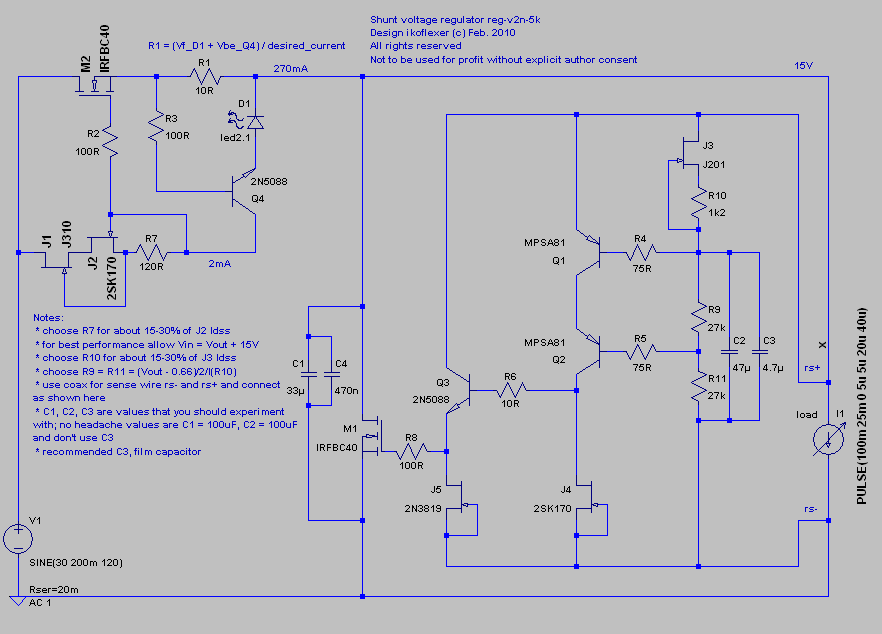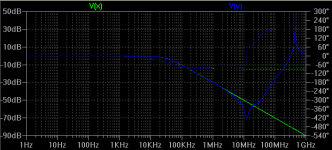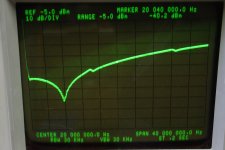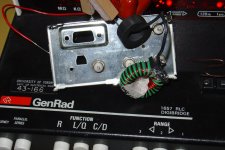Salas, here you go, the first LC filter I showed, with 25pF parasitic capacitance on L. Finesse has no parasitics added.
Still I'm asking, if the finesse reg was perfect, would it be worth building only for the past 10MHz better psrr? Also, what do the RF guys use to clean up HF garbage? Ferrite?
Still I'm asking, if the finesse reg was perfect, would it be worth building only for the past 10MHz better psrr? Also, what do the RF guys use to clean up HF garbage? Ferrite?
Attachments
Salas, here you go, the first LC filter I showed, with 25pF parasitic capacitance on L. Finesse has no parasitics added.
Still I'm asking, if the finesse reg was perfect, would it be worth building only for the past 10MHz better psrr?
Wenzel does among the best high precision oscillators, which usually work in the 2-50 mhz region.
Also, what do the RF guys use to clean up HF garbage? Ferrite?
Well tuned ferrite works (anyway this is my opinion), but they enclose the clocks in metal boxes. For ferrites, we can google RF stuff for radio-amateurs, there's quite some literature
There must be some parasitic R too?
Yes, parasitic R included.
Telstar said:Wenzel does among the best high precision oscillators, which usually work in the 2-50 mhz region.
They certainly seem to know what they're doing. But maybe a simple passive low pass filter can get the work done.
Sure, I don't expect a regulator to do anything at 1MHz even, let alone 10MHz. But the finesse regulator is really a filter, OK. In the end, who cares what it's called. But my point is the following: why bother building the finesse thing if you can get similar results with a simple inductor, resistor, and capacitor passive filter?
Good, so have a look at the second image I attached: a L-C||R filter. The toroid inductor I pulled out of a computer power supply. It measures at 15.9mH with a Q of about 18. The two caps are about 30nF, in parallel with 200R resistor. The C || R are from signal to ground, after the L. Plugged this into the spectrum analyzer and see what it does up to 40MHz?
The dip is at about 8MHz, approximately -78dBm. The marker, right in the center, about 20MHz, -40.2dBm. I'm sure that inductor has high capacitance, and this is what how it filters HF junk.
Out of curiosity I might build the finesse filter and see what it does.
Good, so have a look at the second image I attached: a L-C||R filter. The toroid inductor I pulled out of a computer power supply. It measures at 15.9mH with a Q of about 18. The two caps are about 30nF, in parallel with 200R resistor. The C || R are from signal to ground, after the L. Plugged this into the spectrum analyzer and see what it does up to 40MHz?
The dip is at about 8MHz, approximately -78dBm. The marker, right in the center, about 20MHz, -40.2dBm. I'm sure that inductor has high capacitance, and this is what how it filters HF junk.
Out of curiosity I might build the finesse filter and see what it does.
Attachments
I just got an idea for a potential improvement. Replace R1 in rev 5k with a home made inductor, made from nichrome wire. This is the wire used in hairdryers for instance. Has high resistivity per foot and can take a lot of heat. Its resistance increases lightly with heat, so this one has to be tested. What I have in mind is to take a piece of nichrome wire measured for approximately 10 ohms, and then wind it on a ferrite toroid to obtain an inductor. Of course the toroid has to be painted over so that its surface is not conductive. Depending on the ferrite material, you can get an inductor from a few uH up to even 3-4 mH.
Of course, if you have the patience to wind a long copper wire onto a core you will get the same resistance but MUCH higher inductance. Of course you will have to use the correct diameter wire for the current that you want the regulator to work at.
What's the improvement? Higher ripple rejection!
Here's the schematic again to illustrate where R1 is.

Of course, if you have the patience to wind a long copper wire onto a core you will get the same resistance but MUCH higher inductance. Of course you will have to use the correct diameter wire for the current that you want the regulator to work at.
What's the improvement? Higher ripple rejection!
Here's the schematic again to illustrate where R1 is.

Good point. Well, it was just a crazy idea that came to me out of the blue; haven't thought this one out. I'll see if I can come up with anything like this that would promise a practical improvement.
Edit: here's a nice little experiment someone carried on the DC effect on cored inductors and how to deal with it.
http://www.cliftonlaboratories.com/dc_transformer_saturation.htm
An alternative would also be chokes which are intended for filtering, with the proper DC resistance and DC current rating. Probably not worth it though.
Edit: here's a nice little experiment someone carried on the DC effect on cored inductors and how to deal with it.
http://www.cliftonlaboratories.com/dc_transformer_saturation.htm
An alternative would also be chokes which are intended for filtering, with the proper DC resistance and DC current rating. Probably not worth it though.
Last edited:
not crazy idea, but better to use inductor between rectifier and regulator, like C-L-C
Sure, as a pre-filter I'm fond of LC already
- Status
- This old topic is closed. If you want to reopen this topic, contact a moderator using the "Report Post" button.
- Home
- Amplifiers
- Power Supplies
- My take on a discrete shunt voltage regulator


